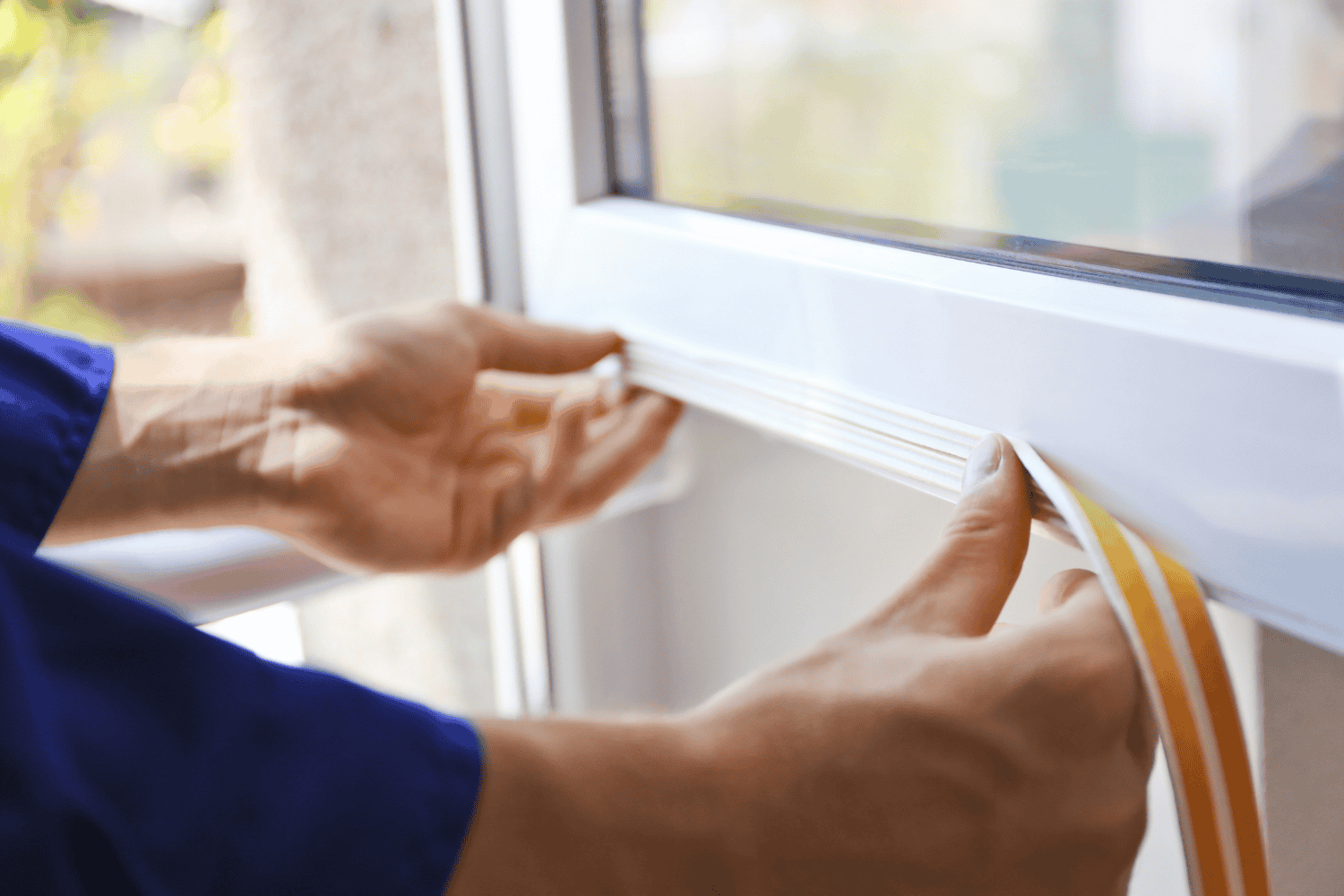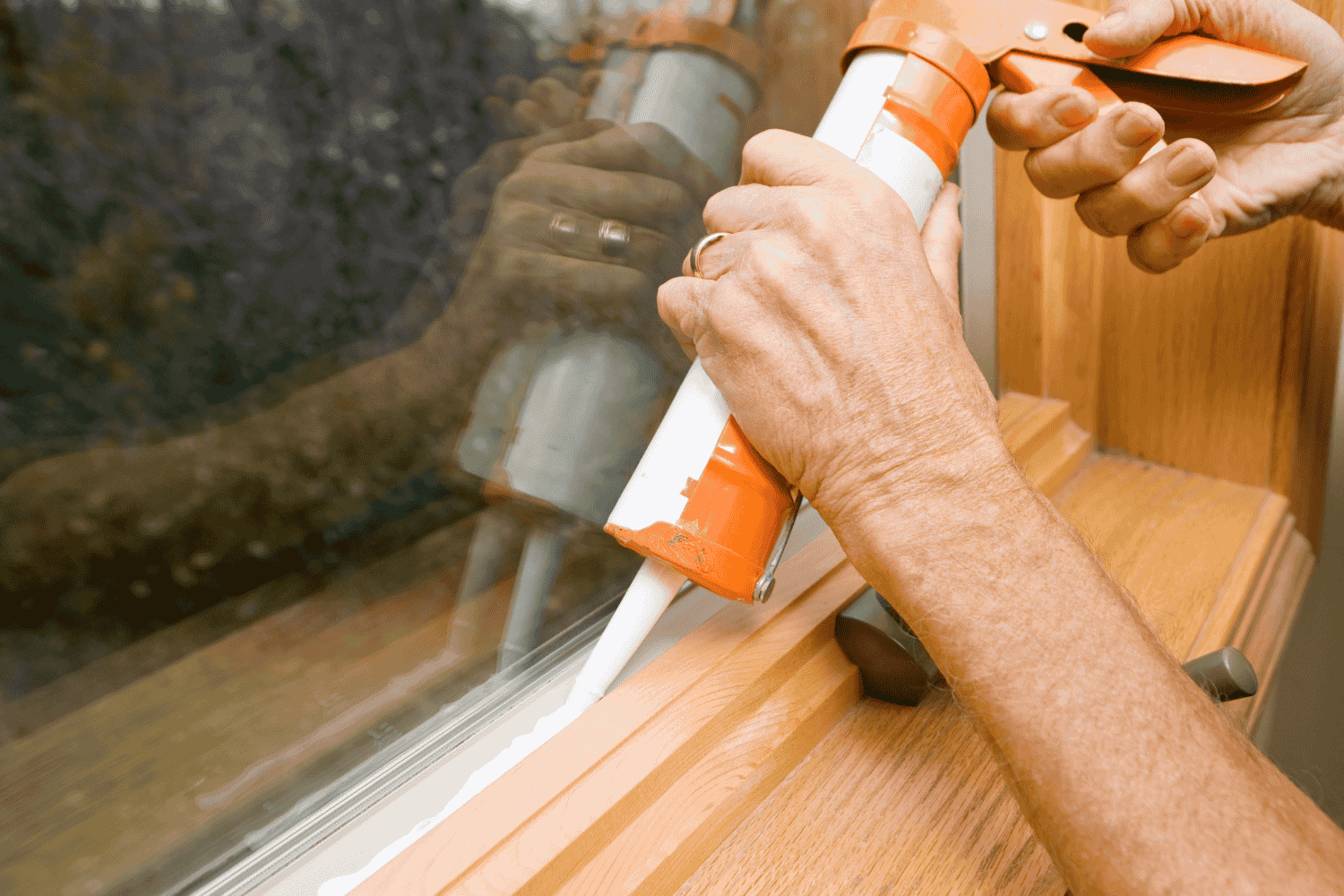The Best Ways to Seal Windows for Maximum Energy Efficiency
Are you struggling with drafts and high energy bills? Learn how to seal windows to improve your home’s energy efficiency. This guide covers how to find leaks, pick the right tools, and apply effective sealing methods. Discover practical tips that will help make your home warmer and more cost-efficient.
Key Takeaways
-
Identify and seal window leaks to enhance energy efficiency; use methods like incense sticks for locating drafts.
-
Utilize essential tools like caulking guns, weatherstripping, and spray foam to effectively seal various window types.
-
Consider eco-friendly sealing options and hire professionals for window replacement to ensure optimal performance and energy savings.
Identifying Window Leaks

Identifying window leaks is the first step towards better energy efficiency in your home. These leaks are common culprits of heat loss, especially around windows and doors. Carefully inspect areas where different building materials converge, such as around window frames. If you notice daylight peeking through these areas, it’s a clear sign of potential air leaks.
A simple yet effective method to track air movement around windows is using an incense stick. Light the stick and slowly move it around the edges of your windows and doors. If the smoke wavers or gets sucked out, you’ve pinpointed a draft. This method is not only effective but also quite engaging, turning a mundane task into a bit of a detective game.
Finally, consider the entire window setup, from the frame to the window trim and interior trim. Inspect for cracks, gaps, or any visible signs of wear. Large gaps can be particularly problematic, allowing significant air leakage. Addressing these issues will help maintain a warm, energy-efficient home.
Essential Tools and Materials for Sealing Windows

Having the right tools and materials is crucial for a successful sealing project. A caulking gun helps apply caulk smoothly and evenly around window frames. Paired with a putty knife, you can ensure a tight, neat seal along the edges. Foam sealant is another excellent choice, particularly for filling larger gaps around window frames. Its ability to expand makes it ideal for irregular spaces.
Weatherstripping helps seal the moving parts of windows, preventing drafts and enhancing insulation. Additionally, having a utility knife on hand helps in cutting materials to the desired length and shape. These tools and materials collectively help achieve a good seal, reducing drafts and improving energy efficiency.
Effective Methods for Sealing Windows

Several effective methods stand out for sealing windows. Caulking is ideal for filling small gaps around window frames, providing a tight seal against air leaks. Remove any old caulk before applying new caulk to ensure better adhesion and effectiveness.
Weatherstripping is another effective method, particularly for sealing the movable parts of windows. This flexible material can be applied around window frames to prevent drafts. For larger gaps, spray foam insulation is highly effective. It expands to fill the gaps, providing excellent insulation properties. Clean the window area and remove old caulk to ensure proper adhesion of spray foam.
Additionally, applying window insulation film can create a barrier that minimizes heat loss, further enhancing energy efficiency. Combining these methods ensures your windows are well-sealed, maintaining comfort and lowering energy bills.
Sealing Specific Types of Windows

Not all windows are created equal, and different types require specific sealing techniques to be effective. Whether you have double-hung, casement, or sliding windows, tailored methods ensure that each window type is properly sealed, preventing air leaks and drafts.
The following subsections cover best practices for sealing different types of windows, equipping you to tackle any window in your home.
Sealing Double-Hung Windows
Double-hung windows often have drafts, but proper sealing can greatly improve their energy efficiency. First, ensure the sash locks are used properly to reduce airflow through gaps. Next, apply weatherstripping around the edges of the window frame to fill any gaps and prevent air leaks.
Additionally, sealing the meeting rails with caulk or weatherstripping can close any remaining gaps, providing a comprehensive solution for drafty windows. These techniques will better equip your double-hung windows to keep the cold out and the warmth in.
Sealing Casement Windows
If not properly sealed, casement windows can also let in drafts. Installing weatherstripping around the frame helps minimize air leaks. Self-adhesive foam weatherstripping is an effective method for this purpose. Adjusting the latch can help achieve a tighter fit, enhancing the seal against drafts.
Combining these methods ensures your casement windows are well-sealed and energy-efficient.
Sealing Sliding Windows
Sealing sliding windows requires a different approach. Applying weatherstripping along the tracks enhances their energy efficiency. Vinyl or rubber weatherstripping works particularly well for this purpose.
For larger gaps, foam tape can be used to improve sealing and energy efficiency. These techniques will help keep your sliding windows sealed and your home comfortable.
Insulating Around Window Frames

Insulating around window frames helps reduce air leakage and improve energy efficiency. Applying weatherstripping around the door frame enhances insulation. Foam backer rods used with spray foam can significantly enhance insulation, minimizing air leakage.
Using a backer rod in larger gaps before applying spray foam ensures a more uniform seal. After the foam has cured, trimming excess foam ensures a neat finish and proper alignment with the window frame.
Incorporating these techniques creates a well-insulated barrier around your surrounding surfaces.
Eco-Friendly Sealing Options
Eco-friendly sealing options are ideal for those looking to reduce their carbon footprint. Products made from recycled materials or sustainable sources serve as sustainable sealing options for windows. These products enhance home efficiency while contributing to environmental conservation.
Window inserts, another eco-friendly option, can reduce condensation, improve energy savings, and enhance aesthetics. Combining caulking with weatherstripping maximizes energy efficiency, making it a cost-effective and eco-friendly solution.
Professional Window Replacement Services
Sometimes, sealing windows may not suffice, necessitating professional window replacement services. Energy auditors and weatherization specialists can offer expert advice on the best sealing techniques.
A&M Home Services offers professional window replacement and installation services for both old and new homes.
They recommend materials like:
-
Wood, which offers beauty and warmth
-
Vinyl, which is easy to care for
-
Fiberglass, which provides high performance and durability against extreme temperatures
Contact A&M Home Services at 574-318-3326 or online for a free estimate.
Additional Tips for Reducing Drafts
Besides sealing windows, additional tips can help reduce drafts in your home. Draft stoppers effectively block cold air from entering through the bottom of doors. Placing foam gaskets behind electrical outlets and switches can also stop drafts.
Regularly check chimneys, flues, and vents for leaks, and ensure fireplace dampers are closed when not in use, to significantly reduce drafts. Cover sliding windows with plastic shrink wrap during winter for added draft protection.
Cost Considerations for Sealing Windows
Sealing windows is a cost-effective way to improve energy efficiency, but consider the costs involved. The cost for sealing windows ranges from $43 to $89 per seal, depending on materials and labor. Basic labor costs can vary significantly, from $151 to $411, based on project conditions.
The total cost for sealing windows typically falls between $252 and $526. DIY sealing can be cheaper, but hiring professionals may be more cost-effective in the long run due to potential hidden costs and the need for specialized tools. Proper installation by professionals ensures optimal performance and longevity of the windows. Warranties on windows are usually valid only if installed correctly by trained professionals.
Summary
Sealing your windows is a vital step in enhancing energy efficiency and maintaining a comfortable home environment. From identifying window leaks to using the right tools and materials, and applying effective sealing methods, this guide has covered everything you need to know. By incorporating eco-friendly options and considering professional services when necessary, you can ensure your home stays warm and energy-efficient through the cold months. Take action today, and enjoy the benefits of a well-sealed home.
Frequently Asked Questions
What services does A&M Home Services offer?
A&M Home Services specializes in professional window replacement and installation, enhancing both old homes and new constructions. Transform your living space today!
What materials do A&M Home Services recommend for window frames?
A&M Home Services recommends using wood, vinyl, or fiberglass for your window frames. Choosing any of these materials will ensure durability and aesthetic appeal for your home!
What are the advantages of wood frame windows according to A&M Home Services?
Wood frame windows provide stunning aesthetics, warmth, and energy efficiency while allowing for design flexibility to complement any style. Embrace the natural beauty and comfort they bring to your home!
What are the benefits of vinyl frame windows?
Vinyl frame windows are a fantastic choice because they are low maintenance and energy efficient, saving you time and money. You can enjoy their durability without the hassle of frequent upkeep!
How can potential customers get a free estimate from A&M Home Services?
To get your free estimate from A&M Home Services, simply call 574-318-3326 or reach out online. Take that step today and see how we can assist you!
 574-318-3326
574-318-3326





